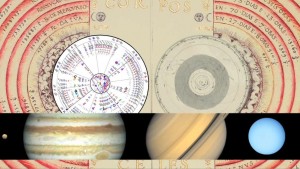Nuts and bolts music history today. In my keynote address to the festival of Charles Ives’s complete songs, I noted that nothing was known about Anne Timoney Collins, author of the poem on which Ives based his song “The Greatest Man,” a poem printed in 1921 in the New York Evening Sun. Liner notes to recordings of this song give no information, or merely mention that she “flourished” in the 1920s. A couple of weeks ago, however, I was contacted by Anne Timoney Collins’s god-daughter, and between her and her mother and the internet I’ve been able to put together a sketch of her life.
The problem is that, after 1921, the poet used the name Anne Collins professionally, which is a pretty common name. But she collaborated with her sister Alice Timoney on at least three plays – Cloaked in Green (1925), Bottled (1928), and Wilderness Road (1930) – and if you look up Alice Timoney, facts start pouring in. The daughter of Irish immigrants, Anne Timoney appears to have been born in June of 1885; Alice was born Aug. 26, 1892. They lived in Boyle County, Kentucky in the early decades of the century, were living in New York City in the ’30s, and ended up in Dade County, Florida, where Anne, according to my informant, died in the 1970s; Alice died in 1980. They seem to have had some success on Broadway in the ’20s, for their play Bottled received positive reviews in the New Yorker of April 28, 1928 and the Time magazine for May 7. Time calls the authors “sisters, southerners, journalists,” the New Yorker says Bottled was “written and acted by unknowns.” It’s a “quiet and delicious” Prohibition-era comedy about siblings who inherit a money-losing distillery from their father and end up bootlegging under their mother’s nose.
So all those programming “The Greatest Man” can now use 1885-ca. 1970 as the poet’s dates, and perhaps the other information will prove useful. Much thanks to the god-daughter and her mother. Any further information is, of course, welcome. It turns out “The Greatest Man” was not Anne Collins’s greatest claim to fame during her lifetime, even if Ives made it the key to her immortality.
UPDATE: A reader has found a record of an Anne T. Collins, born June 1, 1885, and died in Florida May 3, 1979. To obtain the record I’d have to join one of those services like ancestry.com, and I’ve been down that road before: you join, find no information, then they start billing you monthly and you have a devil of a time trying to unsubscribe. Calling them a scam might be too harsh, but they are certainly run unethically. I list the information provisionally. Someday I’ll try to get it straight from the Dade County records office.
SECOND UPDATE: Dennis Aman, composer and genealogy hobbyist, sends me an obituary for Anne T. Collins from her home-town newspaper:
From: The Advocate-Messenger, Danville, Kentucky, Monday, May 07, 1979
DANVILLE NATIVE ANNE COLLINS DIES AT 94
 Anne Timoney Collins, 94, a playwright, poet and prose writer and a Danville native, died Thursday in Miami, Fla. During the 1920’s two of her plays, “Bottled in Bond” and “Bald Mountain,” were produced in New York City. She had also been a reporter for the old New York World and was a contributor to the New Yorker, the Catholic Digest and the New Orleans Item. Survivors include a sister, Alice F. Timoney of Miami, and a brother, the Rt. Rev. Francis J. Timoney of Nazareth, Ky.
So 1885 to 1979 seem to be the confirmed dates. Of course, since she was born in June, that would mean she was actually only 93 when she died, but the obit writer seems not to have had her birth day. I’d also take the New Yorker‘s word for the title of her first play, since their fact-checking is legendary, over that of the Danbury Advocate-Messenger. Dennis has promised me a death certificate, too. It’s amazing the ambiguities that can accumulate about the simple facts of a life.
THIRD UPDATE, March 26, 2013: I’m in the Ives archive at Yale, and I notice that Ives wrote to Anne Collins asking permission to use the poem on Aug. 20, 1921, and that she replied in the affirmative on Sept. 17.



